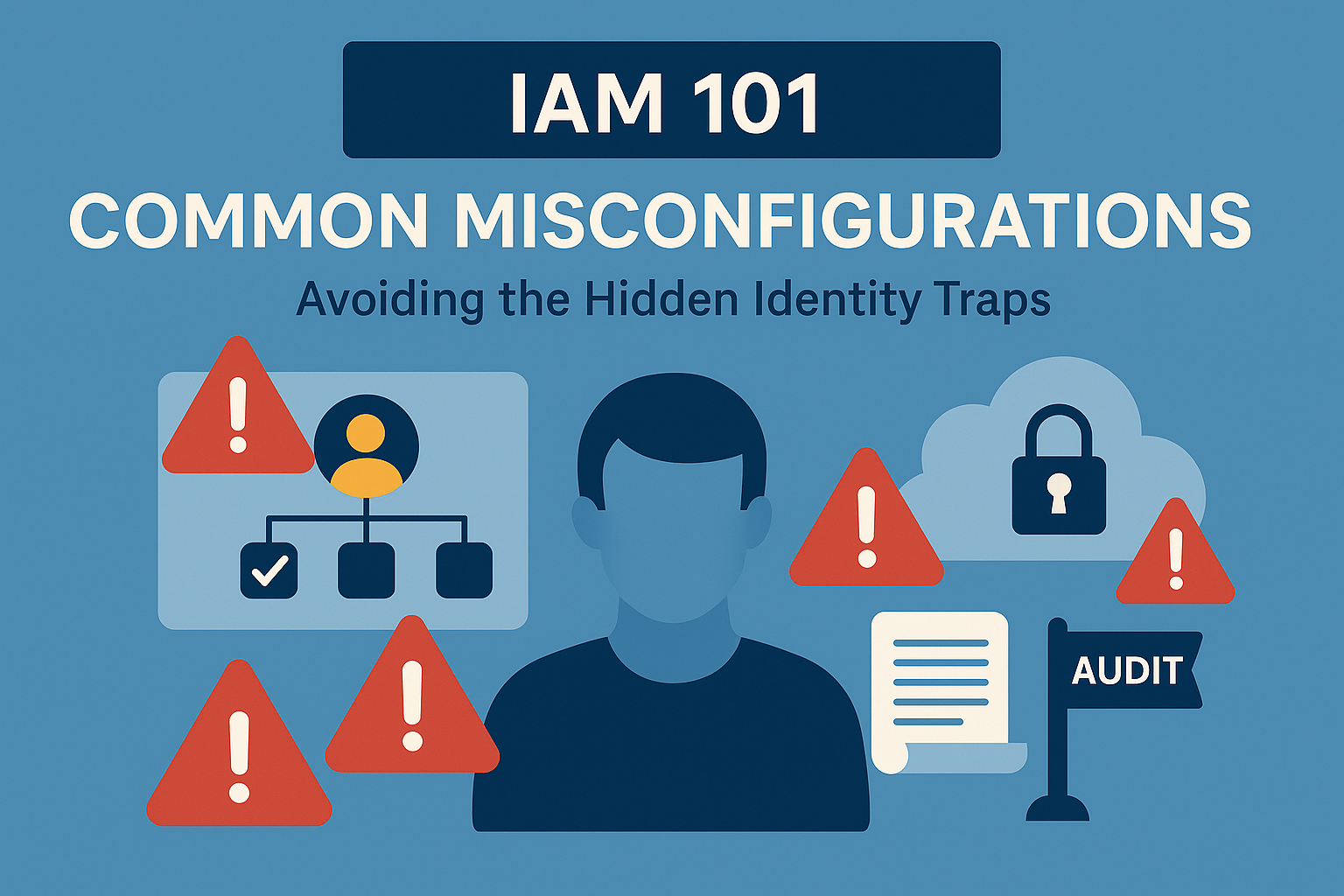
IAM 101: Common Misconfigurations – Avoiding the Hidden Identity Traps
TL;DR
Misconfigured identity systems are among the most overlooked risks in cybersecurity. From unreviewed admin roles to open SSO bypasses, these missteps aren’t always malicious—but they are dangerous. In this post, we break down:
- The top IAM misconfigurations seen in real environments
- How small errors can lead to major breaches
- Audit and automation strategies to catch them early
- Lessons from recent incidents
🔍 Background
I’ve audited dozens of IAM environments, and one thing is consistent: The biggest risks aren’t from what’s missing—they’re from what’s configured wrong.
These are the subtle mistakes that don’t raise red flags until there’s an incident or an audit. And by then, it’s often too late.
Misconfigurations create backdoors, disable critical controls, or result in users having far more access than anyone realizes.
🔥 The Most Common IAM Misconfigurations
| Misconfiguration | What Happens |
|---|---|
| Unrestricted Admin Roles | Too many global or domain admins with persistent access |
| SSO Bypass via Local Login | Users can still sign in with username/password even if SSO is configured |
| No MFA on Critical Apps | Apps like VPN, CRM, or HR tools are left out of MFA enforcement |
| Inactive Accounts Not Disabled | Departed employees or old contractors still have access |
| Overprovisioned Service Accounts | Service accounts have broad access with no rotation or logging |
| Misaligned Group Memberships | Group rules add users to roles they shouldn’t have |
| Missing Logs or Alerting | No visibility into authentication or access changes |
🚨 Real-World Case Study
In early 2025, a well-known marketing platform suffered a breach after a former employee’s account—never disabled in Okta—was used to access a production database.
They had no alerting set up, and the account was not part of the access review cycle.
One orphaned account. No logging. $11 million in damages and lost customer trust.
🧰 How to Catch (and Fix) Misconfigurations
✅ 1. Implement Automated Access Reviews
Use IGA tools to regularly certify access, especially for privileged roles and service accounts.
✅ 2. Set and Enforce MFA for All Applications
Verify that every entry point—SSO, VPN, SaaS—is MFA enforced, not just your identity provider.
✅ 3. Disable Local Logins
Ensure cloud apps only support federated SSO and remove stored passwords or backup admin accounts unless break-glass is approved.
✅ 4. Monitor Joiner-Mover-Leaver Flows
Make sure lifecycle triggers automatically revoke access on term date. No manual tickets. No delays.
✅ 5. Alert on High-Risk Events
Watch for role escalations, group changes, or long-inactive accounts suddenly logging in.
✅ 6. Review All Admin Roles Quarterly
Create a policy: every admin role must be re-attested by the business or IT owner every 90 days.
🧪 Bonus Tip: Build a Misconfiguration Checklist
| Control | Action Item |
|---|---|
| Admin Role Inventory | List and document all accounts with elevated access |
| Service Account Audit | Validate usage, scope, and whether rotation/logging is enabled |
| MFA Coverage | Confirm enforcement across ALL apps |
| Termination Controls | Review your HR-to-IdP automation |
| Federation Settings | Check app configs to enforce SSO-only logins |
| Log Retention & Alerting | Ensure you’re logging authentications and alerts are active |
Use this checklist quarterly. Or better: automate it.
📚 Cited Study
According to a 2024 report by Cybersecurity Insiders, 61% of identity-related breaches in mid-sized organizations were linked to misconfigured identity services—not lack of tools.
🧭 Final Thoughts
IAM misconfigurations aren’t flashy. They’re not ransomware or nation-state attacks. But they are quiet failures that build up until something breaks.
The good news? They’re fixable.
If you treat identity like infrastructure—with proper testing, monitoring, and review—you can catch these issues before they become headlines.
Don’t just build access. Govern it. And verify it’s configured correctly.
🚀 Up Next in the Series:
👉 IAM 101: Identity in the Cloud – Managing AWS, Azure, and Google Securely